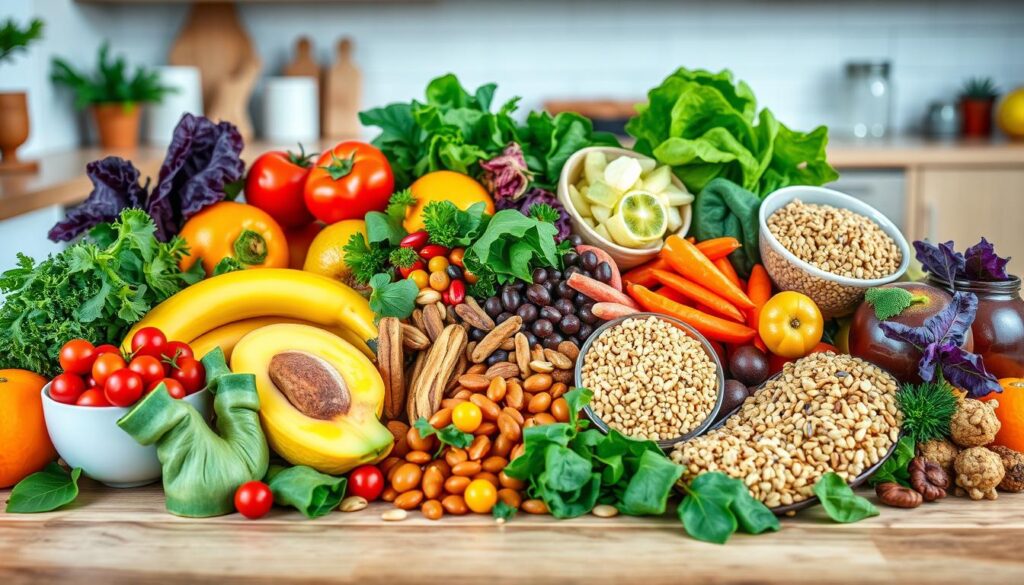The question “Where do you get your protein?” has become something of a running joke in the vegan community, but understanding plant-based protein sources is crucial for anyone interested in a healthy, sustainable diet. The truth is, the plant kingdom offers an abundance of protein-rich options that can easily meet our nutritional needs while providing additional benefits like fiber, antioxidants, and essential minerals.
Understanding Plant Protein
The concept of protein adequacy goes beyond simply counting grams. While animal proteins are considered “complete” because they contain all essential amino acids in optimal ratios, many plant proteins are equally complete, and those that aren’t can be easily combined within a varied diet. The key lies in understanding how different plant proteins complement each other and how to incorporate them effectively into your daily meals.
Legumes: The Protein Powerhouses
Among plant-based protein sources, legumes stand out as true champions. Lentils, chickpeas, beans, and peas offer impressive protein content along with fiber, iron, and other essential nutrients. Consider red lentils, which provide about 18 grams of protein per cooked cup, or black beans, which offer 15 grams. These versatile ingredients can form the basis of countless dishes, from hearty stews to fresh salads.
What makes legumes particularly valuable is their ability to pair perfectly with whole grains, creating protein combinations that complement each other’s amino acid profiles. This natural synergy explains why traditional cultures worldwide have intuitively combined beans and rice, or lentils and bread, creating meals that provide complete protein profiles.
Whole Grains: More Than Just Carbs
The protein content of whole grains often surprises people. Quinoa, often called a complete protein, provides about 8 grams per cooked cup. But don’t overlook other grains – oats, wild rice, and kamut all contribute significant protein to your diet while providing the complex carbohydrates needed for sustained energy. Even bread and pasta, when made from whole grains, can contribute meaningfully to your daily protein intake.
Seeds and Nuts: Small but Mighty
The concentrated nutrition in seeds and nuts makes them invaluable protein sources. Hemp seeds provide 10 grams of complete protein per 3 tablespoons, while pumpkin seeds offer 8 grams per quarter cup. Nuts like almonds and walnuts not only contribute protein but also provide essential healthy fats and minerals. These foods are perfect for snacking, adding to meals, or incorporating into recipes.
Beyond the Basics: Modern Protein Sources
The world of plant-based proteins has expanded dramatically with the advent of more processed options. Seitan, made from wheat protein, can provide up to 25 grams of protein per serving. Tempeh, a fermented soy product, offers about 20 grams per serving while providing beneficial probiotics. These products can help ease the transition to a plant-based diet and provide convenient protein options for busy lifestyles.
Building a Protein-Rich Day
Creating a protein-sufficient diet requires thoughtful planning but needn’t be complicated. Start your day with oatmeal topped with hemp seeds and nuts. Include a serving of legumes at lunch, perhaps in a Buddha bowl or sandwich. Make dinner a celebration of plant protein with tempeh stir-fry or lentil shepherd’s pie. Snack on hummus with vegetables or trail mix throughout the day.
Protein Optimization Strategies
Maximizing protein absorption and utilization involves more than just eating protein-rich foods. Consider these factors:
Food Combining: While you don’t need to combine proteins at every meal, eating a variety of protein sources throughout the day ensures you get all essential amino acids.
Preparation Methods: Proper preparation can enhance protein availability. Soaking nuts and legumes, sprouting grains, and fermenting foods can improve nutrient absorption.
Timing: Spreading protein intake throughout the day, rather than consuming it all at once, optimizes utilization.
Athletic Considerations
Athletes and highly active individuals may need to pay special attention to their protein intake. The good news is that plant-based athletes can thrive with proper planning. Consider these strategies:
Post-Workout Nutrition: Combine quick-absorbing proteins like pea protein powder with fruit for optimal recovery.
Meal Timing: Space protein-rich meals and snacks throughout the day to support muscle recovery and growth.
Caloric Sufficiency: Ensure you’re eating enough total calories to support your activity level and protein needs.
Special Considerations
Different life stages and conditions may require adjusted protein intake:
Pregnancy and Nursing: Focus on protein-rich foods to meet increased needs.
Growing Children: Ensure regular inclusion of concentrated protein sources.
Elderly Adults: May need more protein to maintain muscle mass.
Environmental Impact
One of the most compelling reasons to choose plant proteins is their environmental impact. Plant proteins generally require far less water, land, and resources to produce compared to animal proteins. They also generate fewer greenhouse gas emissions, making them a more sustainable choice for our planet’s future.
Common Concerns Addressed
Let’s address some frequent questions about plant-based protein:
Protein Combining: The old notion that you must combine specific proteins at each meal has been debunked. Eating a variety of foods throughout the day is sufficient.
Protein Adequacy: Most people eating a varied plant-based diet easily meet their protein needs without special planning.
Protein Quality: Many plant proteins are complete proteins and those that don’t become complete when eaten in combination with other foods throughout the day.
Looking to the Future
The future of plant protein is exciting, with ongoing research into new sources and processing methods. From microalgae to novel legume varieties, the options continue to expand. However, the foundations remain the same – whole plant foods provide excellent protein sources that can support health at all life stages.
Remember that transitioning to a more plant-based diet is a journey, not a destination. Start by incorporating more plant proteins into your current diet, experiment with new foods and preparations, and listen to your body’s needs. Share your plant protein discoveries and successes with #PlantBasedProtein #VeganNutrition #PlantBasedDiet.






